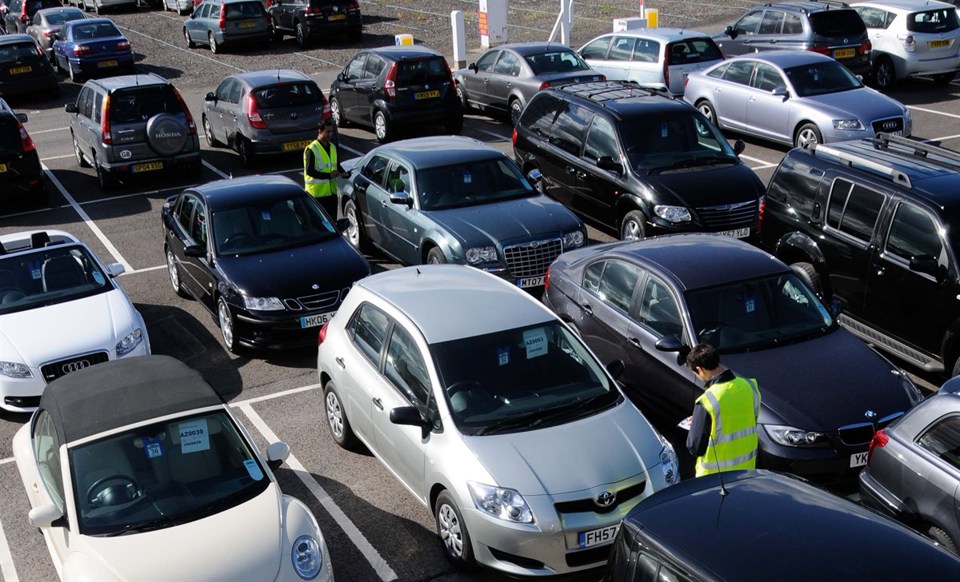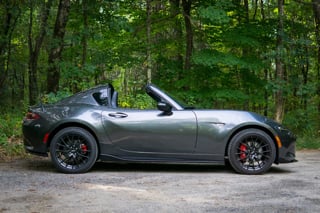Used car sales continued to soar in the first three months of 2024 with more stock than ever hitting the market due principally to new car sales picking up.
First-quarter used car sales rose by 6.5% at 1,967,923 units – the strongest start to a year since pre-pandemic 2019, according to the latest figures published by the Society of Motor Manufacturers and Traders (SMMT).
The increase marks 16 months of successive growth, reflecting recovering supply in the new car market which is in turn improving availability and choice of second-hand cars.
In fact, used car transactions have risen in every month of the year to date but, despite this, SMMT noted that the quarter’s transactions remain -2.6% below pre-Covid levels.
Increasing numbers of battery electric vehicles (BEVs) are also making their presence felt in the used sector, with Q1 sales up by more than two thirds (71.0%) to 41,505 – posting a new record market share of 2.1%.
This makes BEVs the fastest growing powertrain while hybrids (HEVs) also sold in greater volumes, (74,502) representing a 49.3% rise. Plug-in hybrids (PHEVs), too, grew in popularity, with sales up 42.5% to 22,065.
Conventional powertrains remained dominant in the quarter, with sales of petrol cars rising 7.7% to 1,130,396, while those of diesels fell by -1.3% to 697,718. Combined, these cars accounted for 92.9% of all transactions (1,828,114 units) with market share shrinking by just over two percentage points on Q1 2023 as more buyers move to electrified vehicles.
Superminis remained the most popular vehicle type, with 640,711 changing hands – a 7.2% increase. In second place, the lower medium segment grew by 9.2% and saw the biggest volume gain at 45,301 units.
Rounding off the top three, which remains unchanged on the same period in 2023, dual purpose represented 16.0% of the market and recorded the best percentage growth with a 10.3% rise.
Together, these segments accounted for three quarters of all cars sold in the period.4 At the other end of the scale, executive, luxury saloon and upper medium were the only segments to record declines, down -3.5%, -2.0% and -0.5% respectively.
The top three colours were unchanged from Q1 2023, with black taking pole position for the 13th quarter and equating to 21.3% of sales. Grey, the most popular new car colour, held second place but recorded the biggest growth in the top 10, up 10.7%, and blue retained third, with a 6.2% uplift in transactions. Gold and cream were the only colours in the top 20 to decline, falling by -2.5% and -0.6% respectively.
Mike Hawes, SMMT chief executive, said: “A reinvigorated new car market is delivering more choice and affordability for used car buyers and, increasingly, they are choosing to go electric. To enable even more drivers to enjoy the benefits of zero emission motoring, ensuring both supply and demand remains robust is essential.
“Incentivising new EV uptake and investing in a chargepoint network that is accessible, available and affordable to all will drive the nation’s net zero transition.”
Commenting on the latest SMMT figures, Philip Nothard, insight director, Cox Automotive, said the Q1 performance surpasses the 2001-2019 average by 4.8%, painting a promising picture for the remainder of the year.
"This positive momentum signals the used sector's continued recovery, is a testament to the industry's resilience and is particularly noteworthy in the context of the new car market's ongoing challenges. It also gives us reasons to be optimistic regarding used EV adoption.
"As the economy continues to improve, these trends are expected to gain further traction. The anticipated return to a 'push' new car market is poised to further bolster the flow of used cars through the system, adding to the overall optimism within the used sector."
Alex Buttle, co-founder of used car marketplace Motorway.co.uk, said average sale prices on Motorway for cars under five years old increased by 2.5%. following an uncertain Q4 in 2023, when used car prices declined.
“Used EV sales continued to perform well in Q1, with drivers looking to the used market instead of new, as a more affordable route into going electric. We still need the government to provide greater support for the transition to electric - from improved charging infrastructure and new legislation on a single charging app, to financial incentives for private car buyers as well as fleet users. Then we could really see used EV sales soar even further ahead this year.”
Ian Plummer, commercial director, Auto Trader, said the overall retail market was quick to shake off the traditional festive dip, and since the New Year, it had been tracking very robust levels of consumer demand, reflecting the latest SMMT figures.
“Not only did the quarter culminate in a record 89 million visits to our marketplace in March, but used cars sold at the fastest pace we’ve ever recorded, translating to an exceptionally positive start to the year. Based on what we’re seeing, the market’s carried some real momentum into Q2, with average sales up over 6% in April.
“The months ahead may hold some challenges, not least the ongoing squeeze in supply, as well as a turbulent economic and political backdrop, but I’ve every confidence the used car market will continue to demonstrate its huge resilience. “
Richard Peberdy, UK head of automotive for KPMG, said: “After years of being inflated due to supply disruption, many models are seeing prices falling back as increased stock enters the used market and adjusts the supply and demand curve. Some of the largest price corrections are being seen in the used electric market – where price normalisation is occurring as the market evolves from its infancy.”
Sally Foote, CCO at Carwow, said: “The latest SMMT used car figures represent a huge opportunity for retailers. Whilst there has been volatility in EV residual values over the past year, the case for adding used EVs to forecourts is becoming more compelling by the day. Retailers who are responding to consumer demand and selling used EVs in larger volumes are reporting higher margins and faster stock turn.
“We’ve seen listings of used EVs on our platform increase by 23% year-on-year, and our dealer partners report that the average stock turn for used EVs is faster than ICE equivalents, averaging just 41 days compared to the 51-day average for a typical used petrol model. The profit is there too, with used EVs delivering an average profit potential 5% higher than that of used ICE cars during the first four months of 2024.
“This window of opportunity is set to open up in the coming years as more company vehicles are defleeted and the used market receives an influx of competitively priced EVs.”





















Login to comment
Comments
No comments have been made yet.